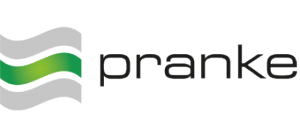The term EDI – Electronic Data Interchange

EDI – what is it?
EDI (Electronic Data Interchange) is the structured electronic exchange of business documents.
These can be invoices, purchase orders and delivery bills, for example. The documents are exchanged without manual intervention – virtually with the aim of automated communication between two systems, without human intervention.
The result of this seamless communication without media discontinuity is a high level of process automation. Business information is exchanged quickly and paperlessly between different systems.
Data is transferred directly from one system to the other without human intervention.
EDI advantages
Automated business processes based on EDI bring many advantages in the operational business:
- Lower transmission costs
- Faster transfer times
- Reduction of data entry errors
- Increased accuracy of information
- Increase in processing speed
- Reduction in paper-based document flow
- Lower inventory costs
- Improvement of lead times
The use of EDI also results in the following advantages for the company management, through business-relevant information that is available more quickly and in a more structured manner.
These are for example:
- Productivity evaluation
- New statistical findings
- target/actual comparisons
- quickly available information
Basic requirement for EDI
A basic requirement for EDI is the existence of a uniform messaging standard.
EDIFACT is such a global and cross-industry message standard for electronic data interchange. In other words, the standardized language in which companies communicate via EDI.
It is the basis for the EANCOM® business message standard.
From this the Pranke WWS profile was derived.
The RMS-Profile represents the common EDI profile of Pranke’s partners – both Retail Management Systems and ERP Systems, coordinated by Pranke. By covering several hundred current installations and with a potential range of several thousand more both on the retail and the supplier side, it ranks equally high as stand-alone profiles e.g. of larger retail companies.
You can find more about our WWS profile for retailers and suppliers here
Typical EDIFACT messages
Message types, which are most frequently used:
EDI – Electronic Data Interchange – what is the process?
Messages are used to exchange data between individual systems and companies. The EDI messages are therefore a fundamental part of an EDI system.
The data from the source ERP system must be compatible with the format of the target ERP system. For this purpose, when setting up the EDI system, a configuration must be selected which in the future converts the data into the EDI format and then into the target format – and this, of course, automatically.
This enables communication between business partners without the ERP systems having to be compatible with each other. Communication thus runs via the system using EDI messages in the standardized EDI format.
How to make your EDI project successful?
For a successful implementation 3 factors are elementary:
In 4 steps to EDI connection
- Check EDI requirements of your business partners (message types, EDI standards, define interfaces)
- Select EDI solution (in-house operation, EDI outsourcing)
- Select EDI service provider with suitable EDI software
- Implementation in own business processes
EDI solutions by Pranke
Pranke has the right tools at hand for this. With our eGate data transport as well as the eBiss converter, we enable you to have a simple and cost-effective EDI solution.
